SUMMARY
This is AI generated summarization, which may have errors. For context, always refer to the full article.
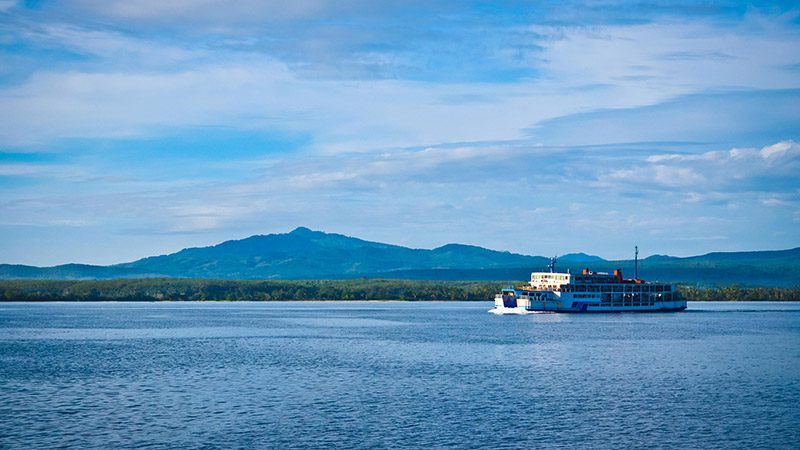
As soon as the vessel sets off from the port of Zamboanga City, my mind goes into a reverie, and I begin to imagine my destination. Crescent moons on venerated mosques, worshippers and their prayer rugs, indigenous people in vivid traditional costumes, the bucolic cluster of stilt houses.
Suddenly, all the scenes in my daydream vanish into thin air as I glimpse a soldier, conspicuous among the idle passengers aboard the vessel. The man in combat uniform holds an assault rifle that goes from his shoulders down to his chest – for obvious reasons, he guards the boat, and I understand that I am in no familiar situation.
I try to erase the thought that I am heading to a place many call dangerous, violent. For the rest of our journey, I hold onto the railing of the vessel as we cruise into an infamous island in the Philippines – Basilan.
At 7:30am, our ferry docks at the wharf of Isabela City in Basilan. Half of me wants to shout my excitement, the other half is brimming with apprehension. I keep my cool as I remind myself of the first rule: blend in with the locals.
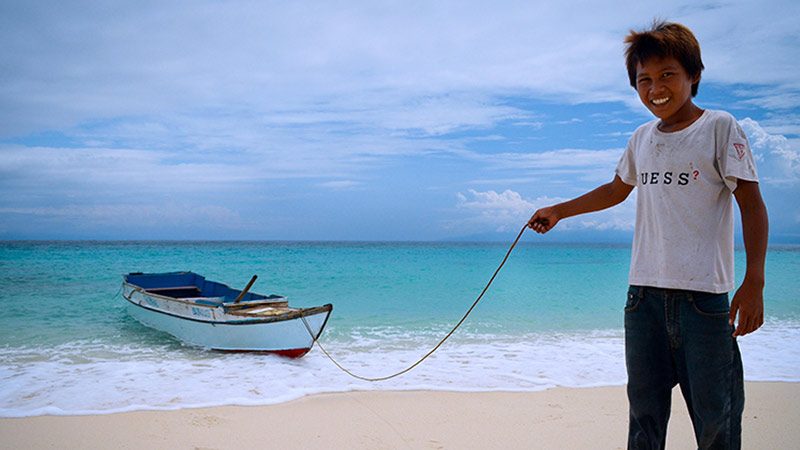
Kalma lang
The hubbub at the port is music to my ears. I go with the movement of the crowd toward the passenger exit, where an overhead signpost that reads “Welcome to Basilan” stands. Beyond the cyclone wire fence, I see Muslim men with skullcap on their heads, waiting for their kin to alight from the same boat.
I am taken aback by the sight of uniformed soldiers safeguarding the seaport premise, holding guns.
“Kalma lang,” I tell myself. (Stay calm.) I am jittery as I stand close to the armed men.
In a few minutes, majority of the passengers have gone on their way. I realize that I am the odd one out – I am a tourist.
In a place like Basilan, rife with acts of rebellion and where militants are members of the community, I am not surprised to know that only a handful of tourists visit the province. Many travelers still consider Basilan as one of the most hostile places in the Philippines because of the conflicts that had taken place there in the past.
Even so, the impression that insurgents thrive in Basilan somewhat helps preserve the splendor of its tourist attractions. When potential visitors think of extremist militants at large, they are overpowered by fear, and with fear comes the decision to shun Basilan and just wait for the tension to completely abate.
On the other side of the spectrum, I take the risk. For one, Basilan’s unspoiled attractions are the primary reason why I’ve been wanting to set foot on the island for the longest time. And here I am, finally.
While on the ride to meet my contact person in Isabela north of the town, I observe the idle streets and the array of structures that comprise downtown.
Omissions
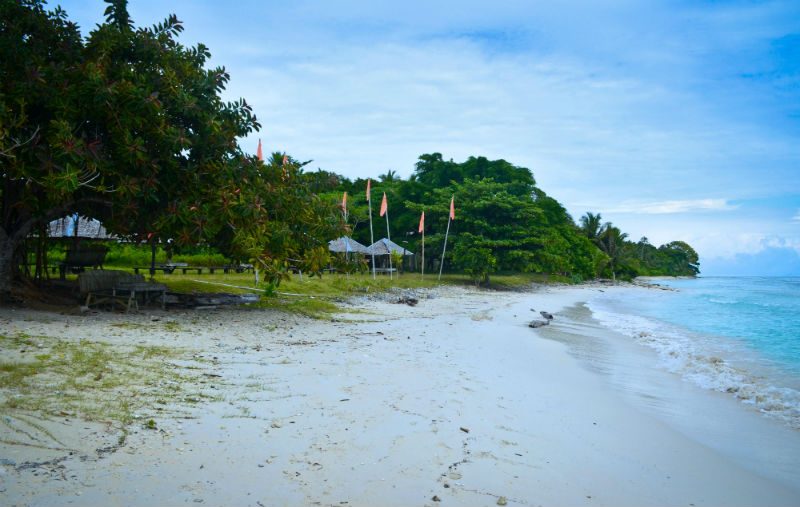
Labeled as a city, Isabela to me is more like a diversified rural town—it lacks the attributes of an urban district; it strongly exudes features that are more inclined to the countryside. Commercial establishments reside in quaint buildings; vehicles move freely on less congested roads; residential homes are somewhere between the old-fashioned and contemporary.
Our tricycle enters a family compound. I meet Yan-yan and Jayson, my local correspondents, who are the front of house of Basilan Tourism Office—they also work as DJs for a local afternoon radio program. Discussing my itinerary, they begin omitting stops because of recent clashes in those areas.
We are left with Malamawi Island and rubber plantation, both of which are within the vicinity of Isabela. Thankfully, Yan-yan opens up about Lampinigan Island, a place she describes as “paradise,” but she notes the expense to get there and the compulsory security that we have to acquire. But still, we put Lampinigan on the circuit as a tentative destination.
Once ready, we set the ball rolling to our first stop: Malamawi White Beach.
Malamawi Island is a stone’s throw away from mainland and took us only about 5 minutes to cross the body of water on a motorboat. Upon docking, we charter two habal-habal (motorcycle taxi) for P200 to get to White Beach.
A dirt road connects the port of Malamawi to the backwoods of the island, passing through a verdant forest of coconuts and wild trees. Our habal-habal conquers a muddy trail – thanks to the rain that poured the night before. We travel for 15 minutes.
On the other side of Malamawi is a stretch of fine beach, known for its delicate coast and rich turquoise waters. Few meters from the shoreline are adjacent thatched cottages, each with an improvised wooden table and a bench made from coco lumber. The cottages are tagged with small plywood placards, sequence numbers, and corresponding rates.
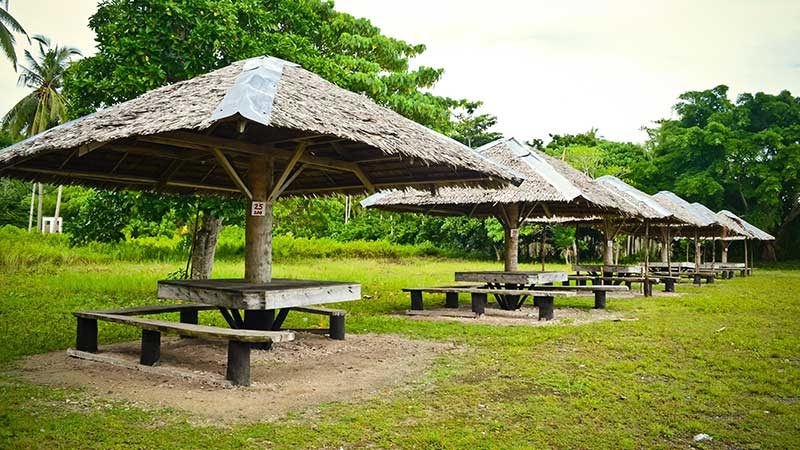
The beach is devoid of visitors. The huts are empty. No one takes a swim.
I wait for the sun to fully pierce through the clouds so as to witness the beach glow and bring out its radiance. According to Yan-yan, if the sun were only at its peak, I would see the sand glitter.

Like lighthouses
We return to the port of Malamawi and take the boat back to the wharf of Isabela toward our next destination. Jayson talks to someone over the phone and then confirms that he already has acquired security personnel for Lampinigan.
We proceed to the coast guard detachment to seek further advice going to Lampinigan. A high-ranking patrol officer emerges from the outpost and regretfully informs us that all the folks who can drive the speedboat are currently involved in a community development activity. He adds that if only someone is available, they would be glad to bring us to Lampinigan, for free.
Instead, the officer directs us to the nearby wharf by the wet market and recommends that we ask a group of boatmen there to see if someone is willing to offer a ride to the island. We heed his advice. We secure our ride.
Lampinigan Island is a 50-minute ride from Isabela City. After almost an hour in the sea, we get a clearer view of the island. From afar, I spot stilt houses planted along the bank of Lampinigan, facing mainland Basilan.
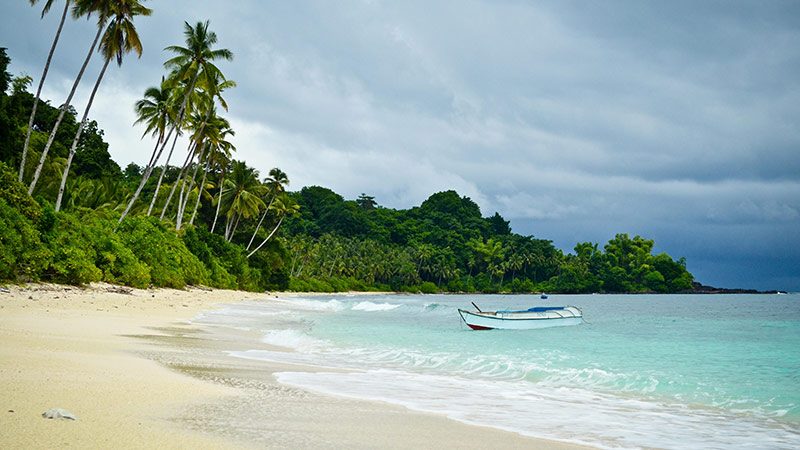
At the tip of the land, facing the vast sea, are layers of rocks polished by the endless pounding of ocean waves. Above the rocks are jumbled trees, adding color to the scene. A cave-like opening at the center leads to the whirling blue-green water underneath.
As soon as we shift our course, a different seascape unfolds. We are presented with a glowing strip of sand and a backdrop of trees extending to the horizon. Everything is raw, untouched.
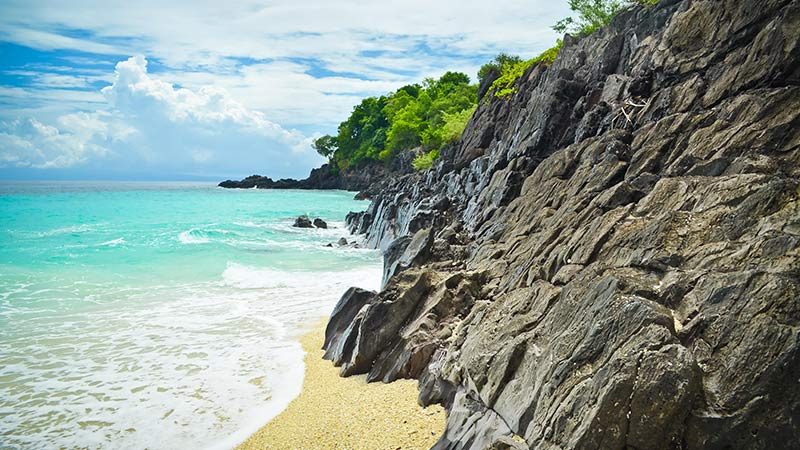
From a distance, we see figures of island residents coming out of the shade, down toward the shore. Some are waving their hands, signaling to us like lighthouses.
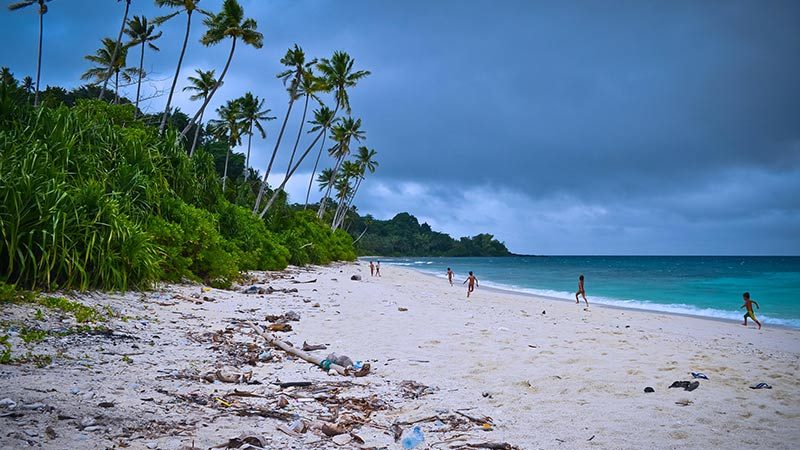
We stride ashore toward a shabby hut in the middle of towering coconut trees to meet the two men assigned to watch over us throughout our stay. The younger man in his mid-forties wears a green cap and holds a mobile phone on his left hand; he looks grim. The older man in his late fifties, wears a bonnie hat; he seems more lax. Both of them don camouflage jackets and carry long rifles—the sight of real guns hanging from their shoulders sends a shiver down my spine.
Though Lampinigan has not received an influx of tourists tantamount to more popular spots in the country, it is a promising gem to behold. In due time, I think Lampinigan can put Basilan on the map and become one of the emerging tourist destinations in the Philippines.
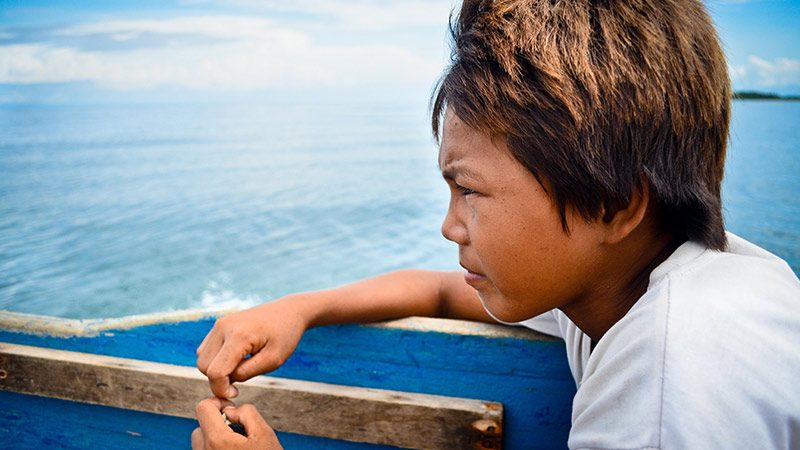
Unsteady
Right on cue, clouds form over the horizon. The breeze of the ocean transforms from warm to cool. Our boatman suggests that we immediately leave the island to avoid getting stranded.
The next thing we know, the ocean swells. Furious waves batter our tiny boat. The boatman maneuvers the boat, while his son continues to drain extra water off the stern.
We hide under the tarp to block the water that splashes into our boat. Jayson holds his necklace of the Virgin Mary; Yan-yan keeps silent; I take videos of the churning waves.
Upon nearing mainland, our boat sustains stability. Steady as log, we hover on the water and dock at the barracks of the coast guard. Jayson and Yan-yan turn euphoric as they release the nervousness they suppressed back in the boat.
As we walk to downtown for lunch, I ask my companions what it’s like to live in Basilan.
“Sanayan lang,” (You get used to it), they respond. In the past, they would wake up to loud gunfire or explosions, and all they could do is take refuge in their modest homes.
But now that the security has improved, they feel protected from harm. They also clarify that not every corner of Basilan is dangerous. Although the province is relatively safe, it is definitely not for everybody.
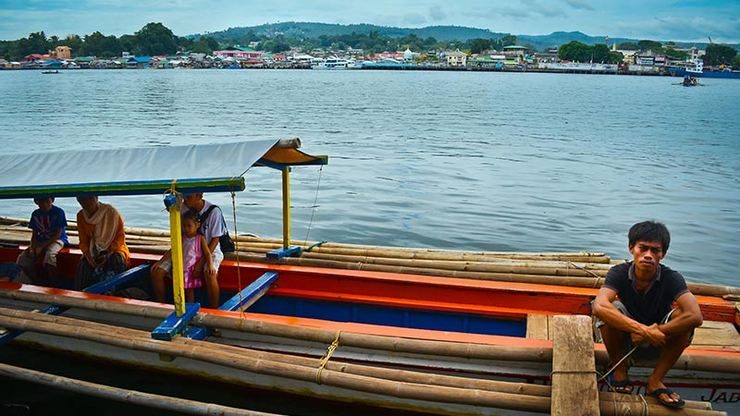
It’s time to go home. I say my goodbyes to Yan-yan and Jayson, the affable people who unreservedly helped me get around Isabela.
At 2 pm, our boat departs Isabela for Zamboanga City. Just when I thought that my tense adventure had ended, torrential rain and immense waves begin to pummel our boat as it rocked from side to side.
Passengers start to grab life vests from the overhead compartment.
“Zamboanga na!” shouts one of the crew in an attempt to calm us down. I survey the surrounding from the rails, and I see that we have indeed reached port.
I exhale. It’s over. – Rappler.com
Editor’s note: The essay above is traveler Mark Rodel dela Rosa’s account of his trip to Basilan, which has a history of political conflict in the western portion of Mindanao,and has been included in some foreign countries’ travel advisories about the Philippines.
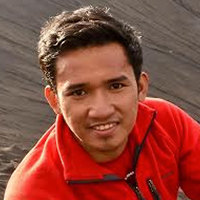 Mark Rodel dela Rosa is a travel bug slayer, a practical backpacker, and a future globetrotter. He dreams to skydive over the Swiss Alps, to live in a Mongolian yurt, and to sled on the icy plains of Antarctica. Follow his adventures of wanderlust on Instagram @kurtzkytravels
Mark Rodel dela Rosa is a travel bug slayer, a practical backpacker, and a future globetrotter. He dreams to skydive over the Swiss Alps, to live in a Mongolian yurt, and to sled on the icy plains of Antarctica. Follow his adventures of wanderlust on Instagram @kurtzkytravels
Add a comment
How does this make you feel?
There are no comments yet. Add your comment to start the conversation.